#indigenous gender
Explore tagged Tumblr posts
Text

- Somacultural Liberation An Indigenous Two Spirit Somatic Guide to Integrating Cultural Experiences Toward Freedom, Roger Kuhn.
I'm gonna frame this on my wall or something.
#biskaabiiyang#two spirit#2s#2 spirit#indigequeer#queer native#native american#ndn#n8v#indigenous#anishinaabe#anishinaabeg#anishinaabek#grace dillon#indigenous futurism#lgbt native#intersectional feminism#indigenous feminism#native gender#indigenous gender#transgender#trans native#pride month#queer books#indigenous books#book quotes#queer quotes#indigenous quotes#somacultural Liberation An Indigenous Two Spirit Somatic Guide to Integrating Cultural Experiences Toward Freedom#roger kuhn
30 notes
·
View notes
Text
can non Turtle Island Natives stop claiming their favorite characters are two spirit? 😃 it’s a CLOSED. CULTURAL. IDENTITY.
#two spirit#closed practice#cultural gender#turtle island#turtle island native#turtle island gender#two spirit natives#indigenous#indigenous gender
2 notes
·
View notes
Text
Reminder that associating hair length with gender is not a culturally universal concept and that many indigenous folks in North America don’t cut their hair for cultural reasons that have nothing to do with gender.
Reminder that a native guy should be allowed to wear his hair in long braids without people calling it gender nonconformity or saying he’s breaking gender norms, because hair length has nothing to do with his gender norms.
Reminder that a queer native woman should be allowed to wear her hair long without being automatically read as femme presenting, that she can be butch with long hair, because long hair is not associated with femininity in her culture.
Reminder that many native folks cut their hair for solemn reasons, usually mourning, and remarking on it as a reflection of personal style or gender presentation can be deeply disrespectful. No, she didn’t just get a fierce butch haircut - she cut her hair because someone died. No, he didn’t cave to a gender conforming haircut - he cut his hair because someone died.
Reminder that this is not universally practiced by native folks and, like all cultural practices, some people are more strict in their adherence than others.
24K notes
·
View notes
Text
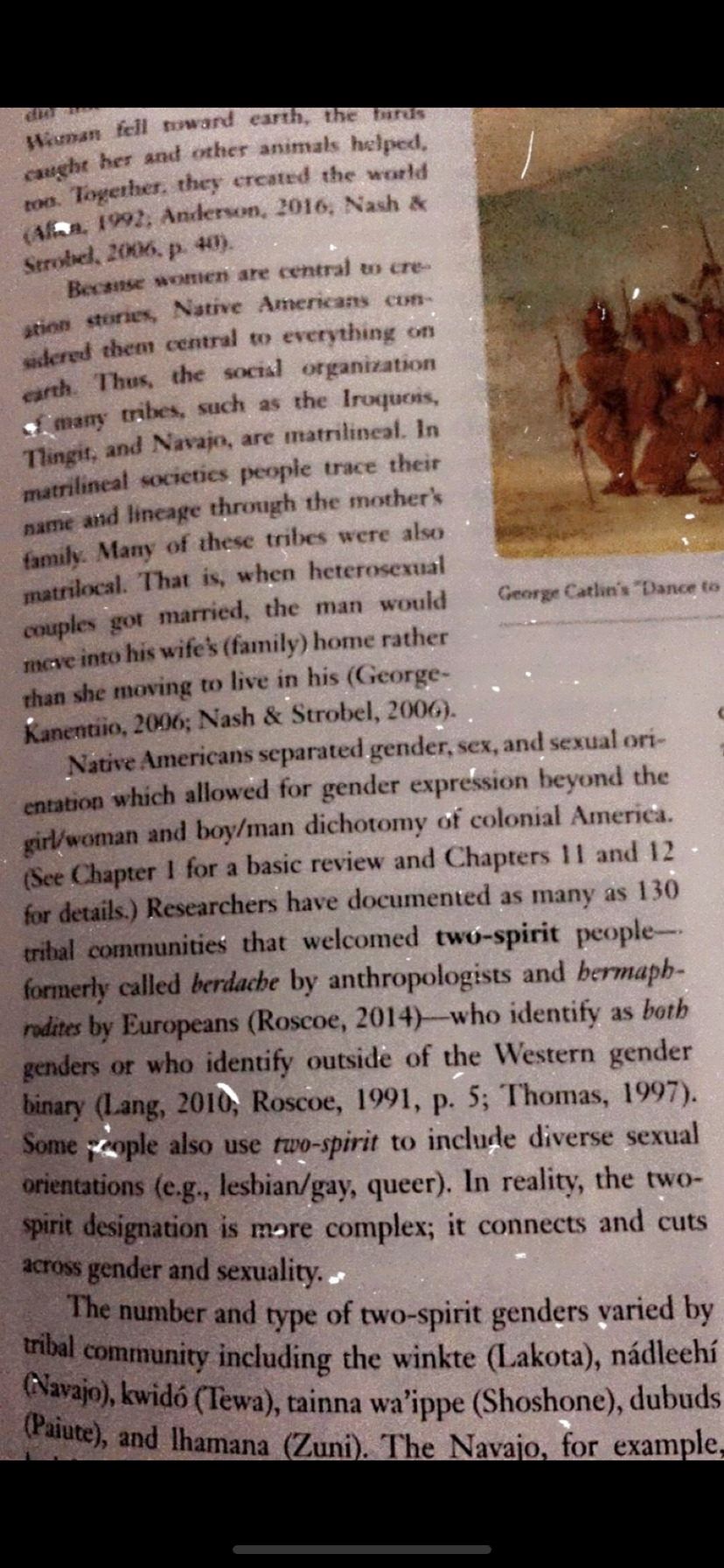
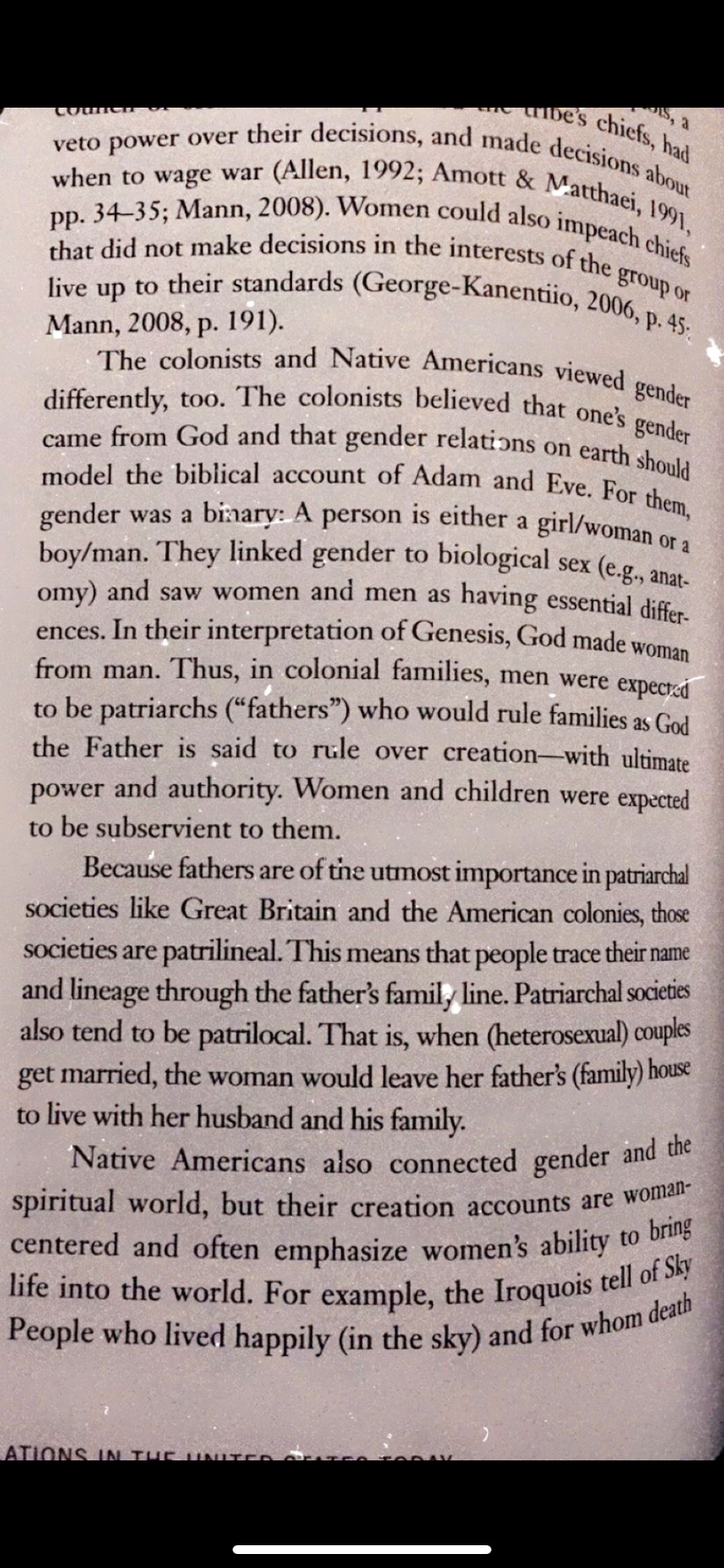


passages from my sociology textbook discussing colonial and Native American gender and sexuality as well as the terms Chicano/a Latino/a Latinx with regard to gender and grammar.
0 notes
Text
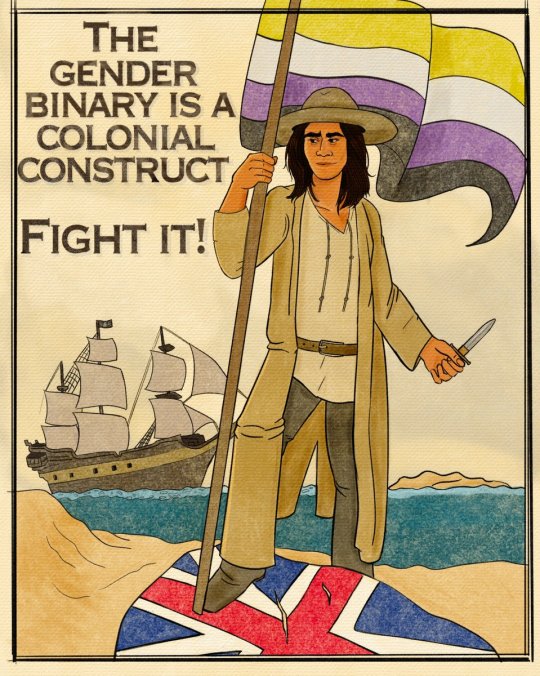
The anti-colonial power of Jim! What a gift to have a non-binary Latine rebel.
#ofmd#our flag means death#jim jimenez#jim#no for real#it speaks volumes a latine person#those decended from indigenous americans#gets to rebel against the colonial gender binary#vico i adore you#Jim my beloved#my art
2K notes
·
View notes
Text
Dandelion News - February 1-7
(sorry it’s late, I’ve had pneumonia. between fever and meds, today was the first day in over a week I could even think)
Like these weekly compilations? Tip me at $kaybarr1735 or check out my Dandelion Doodles!
1. These solar streetlights can withstand Category 5 hurricanes

“[The solar-powered streetlights] can identify potential problems before an outage occurs, identify current outages without the need for customer reporting, and allow for remote control of brightness settings. The streetlights are built to remain operational even during widespread power outages.”
2. 15 Democratic state AGs stand by gender-affirming care

“"Federal funding to institutions that provide gender-affirming care continues to be available, irrespective of President Trump’s recent Executive Order," the attorneys general say. […] “Health care decisions should be made by patients, families, and doctors, not by a politician trying to use his power to restrict your freedoms.”
3. India doubles tiger population in a decade

“[India has protected] the big cats from poaching and habitat loss, ensuring they have enough prey, reducing human-wildlife conflict, and increasing living standards for communities near tiger areas.”
4. A North Carolina wildlife crossing will save people. Can it save the last wild red wolves too?

“There are thought to be fewer than 20 red wolves left in the wild[…. S]tate agencies and nonprofit groups [plan to] rebuild a 2.5-mile section of the highway with fencing and a series of culverts, or small underpasses, to allow red wolves – as well as black bears, white-tailed deer and other animals – to pass safely underneath traffic.”
5. Merrimack Valley public transit system will keep bus fares free
“[… C]ollecting fares [used to] cost MeVa about $300,000 a year to maintain fare boxes, pay staffers and afford insurance. Since going fare free in 2022, the report found ridership increased 60% from pre-pandemic levels[….] The program is now funded by state allocated funds, including money from the so called “millionaire’s tax.””
6. Health care is key for youths getting out of prison. A new law helps them get it
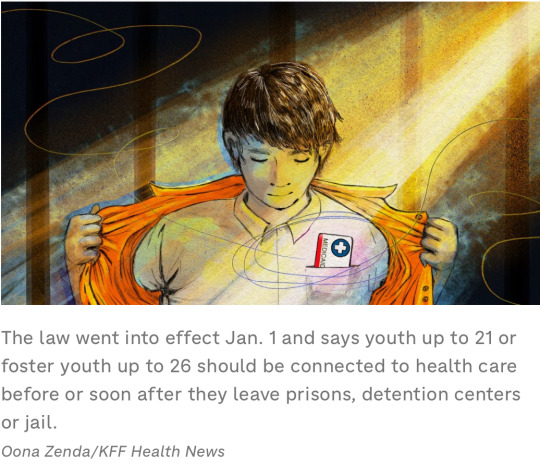
“[The new law] requires all states to provide medical and dental screenings to Medicaid- and CHIP-eligible youths 30 days before or immediately after they leave a correctional facility. Youths must continue to receive case management services for 30 days after their release.”
7. World’s smallest otter makes comeback in Nepal after 185 years

“Scientists have for the first time in 185 years confirmed the presence of the Asian small-clawed otter in Nepal[….] The last time the […] the smallest of the world’s 13 known otter species, was recorded by scientists in Nepal was in 1839.”
8. B.C.'s smallest First Nation has big plans for a 'stewardship' economy
“The Kwiakah Centre of Excellence will be the base for a dedicated research station, an experimental kelp farm, the nation’s regenerative forestry operations and its territorial Indigenous guardian, or Forest Keepers, program[…. R]esults will include a 100-year management plan that integrates climate, salmon, kelp, and soil research to protect territorial waters and remaining old growth forests.”
9. Glades County schools deploy 13 new Blue Bird electric school buses

“The students at the Glades County school district will directly benefit from the cleaner, quieter rides, and operational cost savings that electric school buses provide[, as well as] the addition of much-needed air conditioning in the new school buses. Until now, only three buses in the district provided air conditioning[….]”
10. e.l.f. Beauty CEO defends DEI: 'Our diversity is a key competitive advantage'

“The cosmetics company recently held that it would not nix its DEI initiatives[….] "Our mission is to make the best of beauty accessible to every eye, lip and face," [CEO] Amin said. "One of the best ways we know how to live that mission is to have an employee base that reflects the community that we serve."”
January 22-28 news here | (all credit for images and written material can be found at the source linked; I don’t claim credit for anything but curating.)
#hopepunk#good news#nature#hurricane#infrastructure#solar#us politics#healthcare#gender affirming care#india#tiger#conservation#animals#endangered species#red wolf#wolf#public transit#anti capitalism#prison#medicaid#youth#otter#nepal#world news#indigenous#canada#florida#electric vehicles#dei#cosmetics
148 notes
·
View notes
Text





NAHUA PRESENTATION TERMS๑
[Pt: Nahua Presentation Terms \end PT]
Quetzal: [PT: Quetzal \end PT] A feminine Nahua/Mexica queer person whose femininity presents differently than western ideals of femininity due to being Nahua (such as skin painting, boxy/shapeless clothing, large piercings, etc)
Paca: [PT: Paca \end PT] A masculine Nahua/Mexica queer person whose masculinity presents differently than western ideals of masculinity due to being Nahua (such as long hair, skin painting, tight fitting/revealing clothing, piercings and scarification, etc)
Ocelot: [PT: Ocelot \end PT] A non-binary Nahua/Mexica queer person whose non-binary status presents differently than western ideals of what non-binary looks like due to being Nahua (such as long hair, skin painting, body adornments like piercings and scarification, etc)
Axolotl: [PT: Axolotl \end PT] An androgynous Nahua/Mexica queer person whose androgyny presents differently than western ideals of androgyny due to being Nahua (such as long hair, a mix of boxy and form fitting clothes, piercings and body adornments, scarification, etc)
જ⁀➴EXCLUSIVE TO PEOPLE WITH NAHUA/MEXICA HERITAGE. People who are reconnecting are welcome to use these flags.
[PT: EXCLUSIVE TO PEOPLE WITH NAHUA/MEXICA HERITAGE. People who are reconnecting are welcome to use these flags. \end PT]

#☕~drink me#~ indigenous#~ presentation#flag coining#mogai coining#qai coining#qai flag#mogai flag#indigenous#nahua#aztec#mexica#mexicah#presentation term#presentation flag#bipoc exclusive#gender presentation
24 notes
·
View notes
Note
it’s very odd seeing how much discourse in the trans community is centered around growing up in a patriarchy because like. On one hand, yeah, the entire WORLD is a patriarchy. united states, china, and russia are dominating global powers and are very clearly patriarchal societies. but also. There are places that do not follow that. i myself grew up in an indigenous tribe that technically functioned as a matriarchy (though even that’s not entirely true as gender didn’t really matter? it was a religious based tribe so the power kinda went to those who handled religion which was evenly divided). Like i understand WHY its talked about so much, it is majority of the world, its just very hard to join in discussions when my experience of the patriarchy is “yeah the US invaded my country and i went into big cities a lot?”
This! Oh my God, this!
This is what I’m trying to say, absolutely. While sure it is the majority of the world that holds a patriarchal power structure, acting like societies that have matriarchal or another type of gender structure suddenly stopped existing is one that inherently supports colonialism and racism, and actively erases those cultures and their traditions. People will prescribed their experience as inherent to everybody else on the world throughout time and culture, not even taking the time to realize that might not be true for everybody else, especially those from Western countries. Even in those countries you named, there were/are societies that are matriarchal.
My experience with a non-patriarchal society is one that I was exposed to when I was in Nicaragua. My family does (non-religious, I often need to state this) medical work with both indigenous communities and other communities ware the hospitals typically have a lack of supply due to an inability to actually get medical supplies to the hospital and are under-resource because of that or geographic isolation.
And this is further complicated by my own creole mixed indigenous decent weird fucking ethnicity. Where sure, women can’t become fathers and pastors, but they can become healers and are believed to be divinely blessed by god. Often times they are of even a more important role in the community, than officials of the Catholic Church and the men in it, who basically ran Louisiana until the US government came in. There are a couple more examples, again Creole culture is very very complicated because it is inherently a combination of multiple contrasting societies blended into one.
And all of this goes back to the idea that femininity and masculinity are these very strict things with automatic determined behavior and roles everywhere, no exceptions. Not like throughout time, history, and culture human societies have varied greatly. Not like, depending on how you define the word dress, there haven’t been cultures that identified that as a masculine clothing style and not like they’re haven’t been cultures that have considered shorts and pants a feminine style. They just prescribed their culture onto everybody else’s because that’s the only way they can perceive the world.
Like you said the world might be, but not every community within the world is, and it is highly important to include those communities and those societies within our conversation.
#matriarchy#patriarchy#transandrophobia#transgender#lgbt#trans unity#intersectional feminist#intersectional feminism#feminism#indigenous issues#colonialism#gender essentialism#important
21 notes
·
View notes
Text
so sick of north america and europe’s superiority complex over being “so queer friendly 🩷💕💞💓💗🌸🌺🌷🪷!”
latin america, north america, south and east asia, and africa all had non european ideas of gender and sexuality. my good friend colonization force fed homophobia and the gender binary down their throats. and now they wonder why gay marriage is illegal in these countries? it’s because of you girlie, you are the problem.
99 notes
·
View notes
Text
I saw someone say that they would feel betrayed if they found out someone they were talking to who had identified as transfem was actually afab. To that I say, it’s none of your business how anyone identifies or what their reasons are, and if you would feel betrayed by a queer person identifying with a term and community, that’s something you need to rethink and reflect on. I am tired of colonial terminology being forced on Black/Brown/Indigenous people, especially when these terms are being misused. AFAB/AMAB terminology originates from intersex communities. I am not AFAB or AMAB. I was not assigned a gender. I understand that society perceives me as a specific gender most of the time, but their perception has zero to do with how I identify. I identify as transfem because I am coming from a place rooted in indigenous masculinity, and transgressing and transforming into womanhood. I do not have to explain or justify the way that I identify. It’s just another painful reminder that white gender will always be centered, and Black/Brown/Indigenous gender will always be excluded. I understand why you would feel that way, but your feelings are not my problem. Identity policing is rooted in white supremacy.

#indigenous#two spirit#gela#mamflorita#malalåhi#black and brown gender#indigenous gender#native#native safe space#cultural gender#transfem#colonial language#white colonial gender#colonial gender binary
2 notes
·
View notes
Text
Me: today's gonna be a good day!!
🧠: nex loved their cat zues and playing minecraft...they loved where they were from...
Me: I'm gonna make today a good day...for them..
#nex benedict#transgender#trans#queer#lgbtq#lgbt pride#nonbinary#gender#enby#non binary#2 spirit#indigenous
95 notes
·
View notes
Text
@Chahtawordoftheday wishes trans folks a happy day of visibility. Chi aiukli cha chi hullo li! (You are beautiful and I love you!)

#choctaw#indigenous#native american#indian#language learning#langblr#language#notchahtahwordoftheday#transgender#trans pride#transmasc#transfem#nonbinary#queer community#queer#gay#love#encouraging words#gender fluid#trans day of visibility
16 notes
·
View notes
Text
Muxes have been defying the gender binary for generations | CNN
Indigenous communities in Mexico have recognized a third gender since before Spanish colonization and its ensuing influence of Catholicism, with anthropologists pointing to Aztec priests who wore clothing associated with another gender and Mayan gods who were both male and female. Today, the muxes of Juchitán are just one of several communities around the world who don’t fit into the gender binary, such as hijras in India, bakla in the Philippines and fa’afafine in Samoa.
84 notes
·
View notes
Text



via SpeakNahuatl
#pride month#lgbtqia#indigenous culture#two spirit#gender fluid#transgender#non binary#muxes#lgbtq community#gender binary
26 notes
·
View notes
Text
I don't fuck with that Christianity shit because the people who have hurt me the most were christians who hurt me in the name of their god. So fuck them and fuck that.
#ex pentecostal#ex christian#mixed race#gender fluid#lgbt#christianity#jesus christ#christian faith#christian living#christianity is a cult#Christianity causes genocide#cree indigenous#indigenous issues#genocidal christians#mexican is native american#Christianity is against the native people and their teachings#we deserve better#protect the children#Christianity is child abuse#christian god is a narcissist#fuck christianity#fuck christopher columbus#abolish Christianity
32 notes
·
View notes
Text
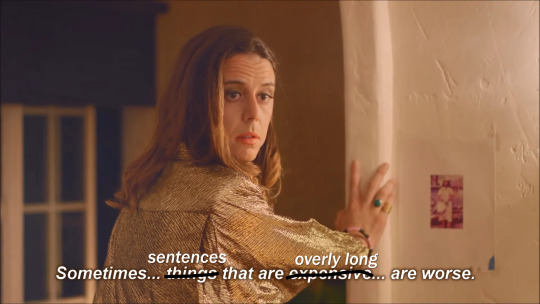
Missive for all video essayists.
#kai rambles#im just#i watched jessie genders 4 hour video on antisemitism in the left#i have many thoughts about it#not many of them are positive#but i had to pause the video at one point so i could write out a sentence that she said because i didnt understand it#it was:#''that when we are discussing indigeneity it is not meant to be an identity or discourse over who deserves land but of a people's#relationship to the concept of a state over which the state has control of that land that the people have a relationship to''#WHAT DOES THAT MEAN JESSIE?#I STILL DONT UNDERSTAND WHAT YOU MEAN#I WROTE IT OUT IN A NOTEPAD AND I STILL DONT KNOW WHAT THAT SENTENCE MEANS
16 notes
·
View notes